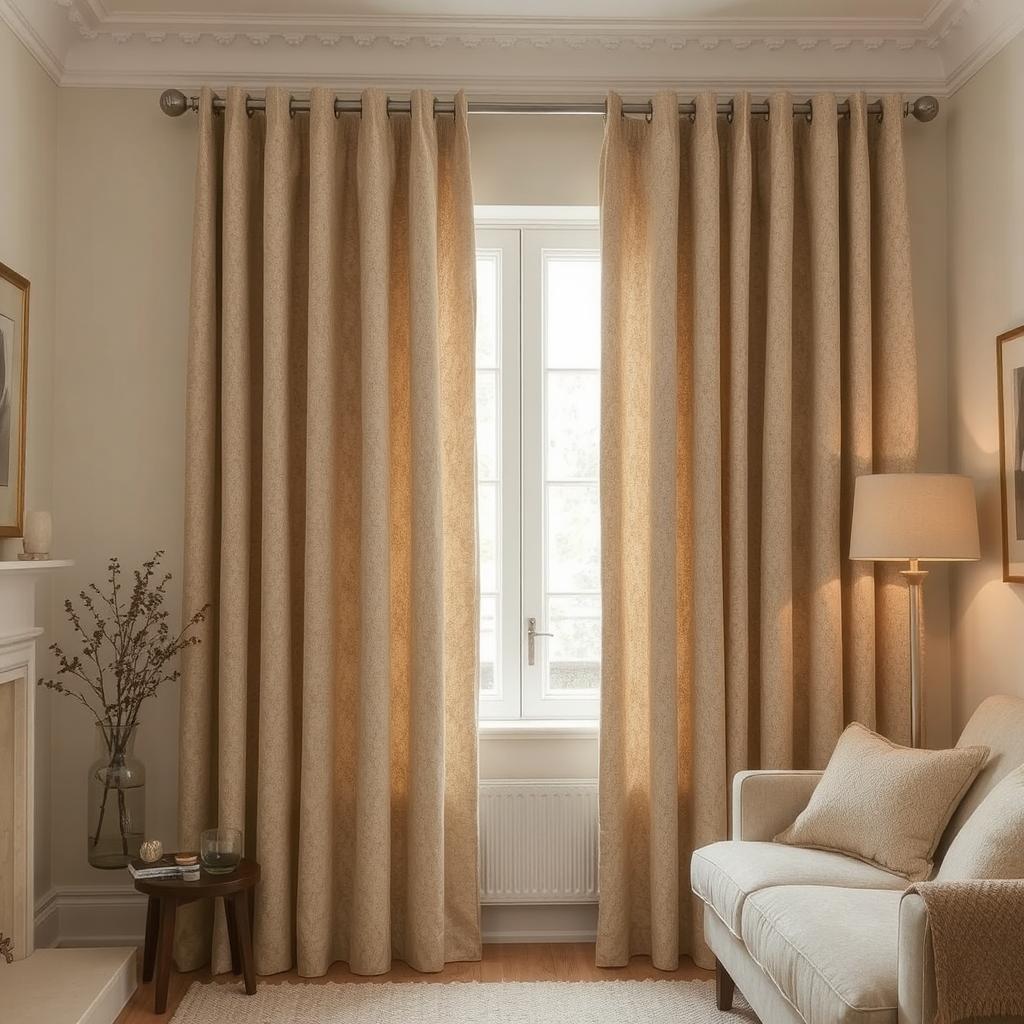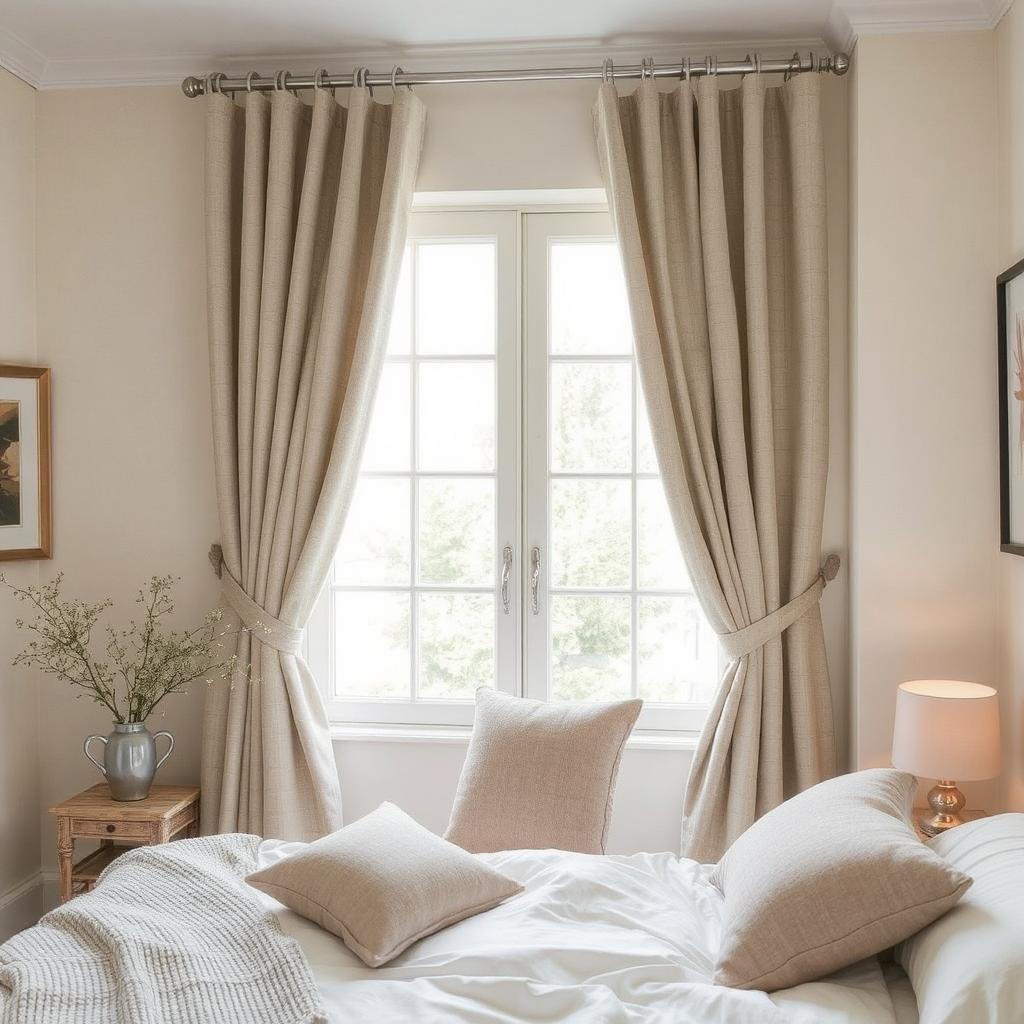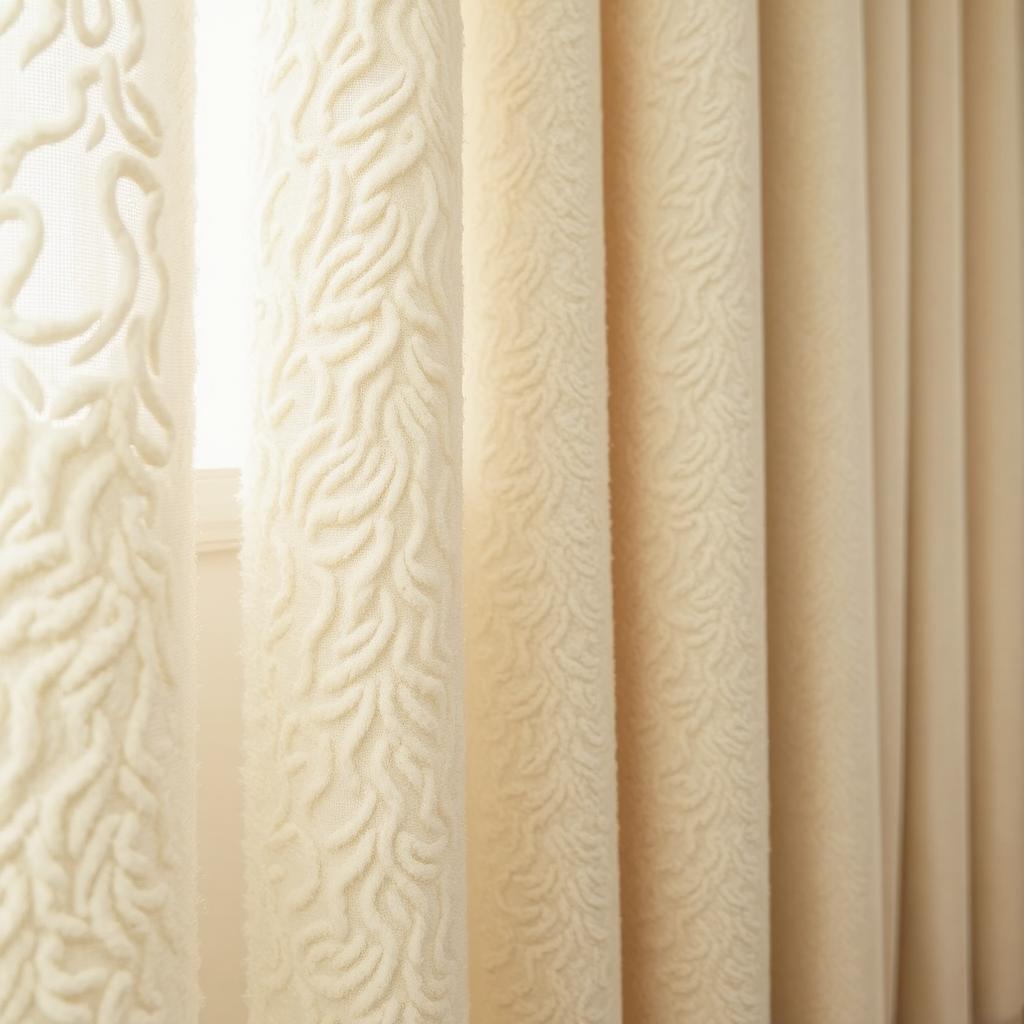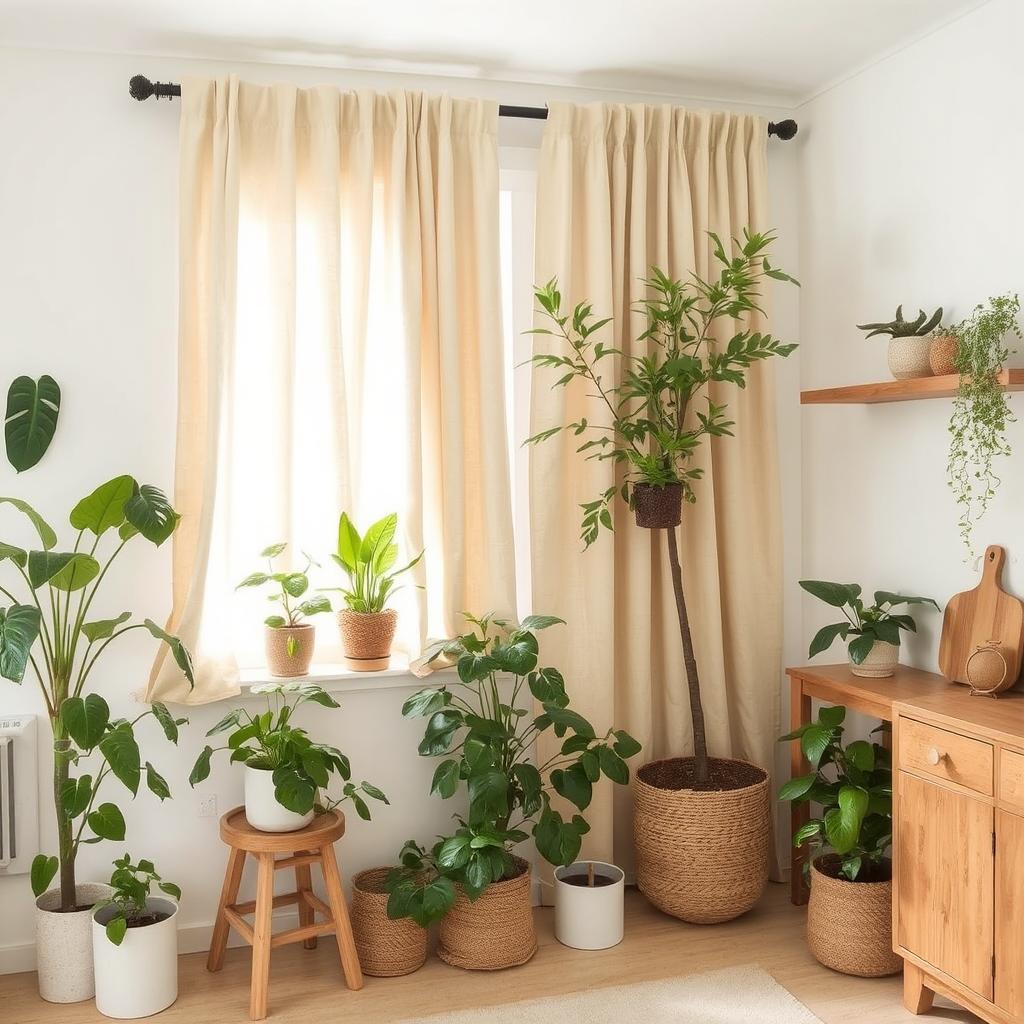Wool curtains are a popular choice for homeowners who want a blend of style, comfort, and practicality. Known for their cozy texture and great insulation, wool curtains can make any room feel warm and inviting. They not only improve the look of a room but also help with energy efficiency by regulating indoor temperatures. Whether you want the warmth and luxurious feel of pure wool, the affordability and durability of wool blends, or the extra insulation of thermal wool curtains, there’s a wool curtain style to suit your needs. In this post we will discuss different type of wool curtains with their pros and cons.
However, not all wool curtains are the same. There are various types to choose from, each offering different benefits. Whether you’re looking for warmth, durability, or a more budget-friendly option, there’s a wool curtain style for every need. In this guide, we will explore the different types of wool curtains: pure wool curtains, wool blend curtains, thermal wool curtains, and linen-wool blended curtains, highlighting their pros and cons so you can make an informed decision on the best curtains for your home.
Pure Wool Curtains
Pure wool curtains are made from 100% natural wool fibers. These curtains are popular for their excellent insulation properties and luxurious texture. They’re a great choice for homeowners looking to add a touch of elegance to their space while also improving the thermal efficiency of their windows. Pure wool curtains can keep your home cozy in winter by trapping heat and cool in summer by reflecting the sun’s rays.
Pros of Pure Wool Curtains:
- Great Insulation: Wool is a natural insulator, which helps to maintain your home’s temperature. Pure wool curtains can reduce heat loss in winter and keep your room cool in summer, thus lowering your energy bills.
- Durable: Wool is a strong and durable material that can withstand years of use. Pure wool curtains can last for a long time, retaining their texture and appearance.
- Luxurious Look: The rich, soft texture of wool adds an air of luxury to any room. Pure wool curtains drape beautifully and give off a refined, elegant vibe.
- Eco-Friendly: Wool is a renewable and biodegradable material, making it an environmentally friendly choice for your home. Global Organic Textile Standard (GOTS)
Cons of Pure Wool Curtains:
- Expensive: Pure wool curtains are generally more costly than other types of curtains, such as those made from synthetic materials or wool blends.
- Maintenance: Wool curtains require special care to maintain their quality. Most pure wool curtains need to be dry-cleaned to avoid damaging the fibers.
- Heavy: Pure wool curtains can be heavy and require sturdy curtain rods to support their weight. This may add extra cost if you need to purchase stronger rods or hooks.
In summary, pure wool curtains are a great investment if you want superior insulation, durability, and a luxurious appearance. However, they come with a higher price tag and require more maintenance compared to other curtain options.

Wool Blend Curtains
Wool blend curtains combine wool fibers with synthetic materials such as polyester, cotton, or acrylic. These curtains offer some of the benefits of pure wool, such as insulation and durability, but at a more affordable price point. Wool blend curtains are an excellent option if you’re looking for a balance between cost and performance.
Pros of Wool Blend Curtains:
- Affordable: Wool blend curtains are less expensive than pure wool curtains, making them a great option if you’re on a budget but still want some of the benefits of wool.
- Durable: Blending wool with synthetic fibers helps increase the durability of the curtains. These curtains are less likely to wear out or get damaged over time.
- Easier to Maintain: Wool blend curtains are often machine washable, making them easier to clean compared to pure wool curtains, which usually require dry cleaning.
- Lightweight: Wool blend curtains are generally lighter than pure wool curtains, making them easier to handle and install.
Cons of Wool Blend Curtains:
- Less Insulation: While wool blends still offer some insulation, they don’t provide the same level of thermal efficiency as pure wool curtains.
- Less Luxurious: Wool blend curtains may not have the same luxurious feel and appearance as 100% wool curtains.
- Not as Eco-Friendly: The inclusion of synthetic fibers reduces the environmental benefits of wool blend curtains, as synthetic materials are less eco-friendly than natural wool.
Wool blend curtains are a practical choice if you’re looking for a more affordable and durable option that requires less maintenance. However, they don’t provide the same level of insulation or luxurious look as pure wool curtains.

Thermal Wool Curtains
Thermal wool curtains are designed with extra insulation properties to help regulate indoor temperatures even more effectively. These curtains are perfect for homeowners who live in areas with extreme temperatures, whether it’s very hot or cold. Thermal wool curtains are typically thicker and might have additional backing materials to enhance their insulating properties, making them an ideal option for anyone seeking better energy efficiency in their home.
Pros of Thermal Wool Curtains:
- Excellent Insulation: Thermal wool curtains are perfect for those who want to save on energy bills. These curtains offer superior insulation, keeping your home warm during the colder months and cool during the warmer months.
- Noise Reduction: The thickness of thermal wool curtains helps absorb sound, which is especially beneficial if you live in a noisy area or want to create a more peaceful environment.
- Durable: Wool is a strong and durable material, so thermal wool curtains are built to last and withstand years of use.
- Eco-Friendly: Like other wool curtains, thermal wool is biodegradable and renewable, making it a great choice for those who want to reduce their environmental impact.
Cons of Thermal Wool Curtains:
- Heavy: Due to their added thickness, thermal wool curtains are heavy and may require extra-sturdy curtain rods to hold them up.
- Higher Cost: Thermal wool curtains tend to be more expensive than regular wool or wool blend curtains because of the additional materials used for insulation.
- Maintenance: Thermal wool curtains may require more care to maintain, including dry cleaning, to preserve their appearance and insulating properties.
Thermal wool curtains are an excellent choice for those who need extra insulation and noise reduction, but they can be heavier and more expensive than regular wool curtains.

Linen-Wool Blended Curtains
Linen-wool blended curtains combine the breathability of linen with the warmth of wool. This unique blend offers a comfortable, stylish option for homeowners who want a curtain that works well in a variety of climates. Linen-wool blended curtains are perfect for those who want to create a cozy, natural look in their home while still benefiting from the insulating properties of wool.
Pros of Linen-Wool Blended Curtains:
- Breathable: Linen is naturally breathable and helps regulate moisture, so linen-wool blended curtains provide a comfortable atmosphere in all seasons.
- Natural Look: Linen-wool curtains have a beautiful natural texture, creating a rustic and timeless aesthetic that complements many interior styles.
- Durable: Both linen and wool are strong and durable fibers, so linen-wool blended curtains are built to last and resist wear and tear over time.
- Eco-Friendly: Linen and wool are both biodegradable, renewable materials, making linen-wool blended curtains an environmentally friendly option.
Cons of Linen-Wool Blended Curtains:
- Less Insulation: While linen-wool curtains offer some insulation, they do not provide the same level of thermal efficiency as thermal wool curtains or pure wool curtains.
- Wrinkling: Linen is known for wrinkling, and while the wool blend helps reduce this, some creasing may still occur.
- Care: Linen-wool curtains may require gentle cleaning and more regular care to keep them looking their best.
Linen-wool blended curtains are a great option if you’re looking for a balance of breathability, durability, and eco-friendly materials. While they don’t offer as much insulation as thermal wool curtains, they are a stylish and practical option for most homes.
Comparison Table
| Type | Pros | Cons |
|---|---|---|
| Pure Wool | Excellent insulation, durable, eco-friendly, luxurious look | Expensive, requires dry cleaning, heavy |
| Wool Blend | Affordable, durable, easy maintenance, lightweight | Less insulation, not as luxurious, eco-impact from synthetics |
| Thermal Wool | Superior insulation, noise reduction, durable, eco-friendly | Heavy, higher cost, requires dry cleaning |
| Linen-Wool Blend | Breathable, durable, eco-friendly, natural look | Less insulation, wrinkles easily, requires gentle care |
Conclusion
Wool curtains come in various types, each with its unique benefits. If you want the best insulation and luxury, pure wool curtains are the way to go. If you’re looking for a more budget-friendly option with good durability, wool blend curtains are a great choice. For extra insulation and noise reduction, thermal wool curtains are perfect, though they may be heavier and more expensive. Finally, if you want a breathable, natural look with some insulation, linen-wool blended curtains offer the perfect balance of comfort and style.
Ultimately, the best type of wool curtain for your home depends on your budget, insulation needs, and aesthetic preferences. Consider the pros and cons of each type and choose the one that best meets your needs for comfort, style, and performance.



